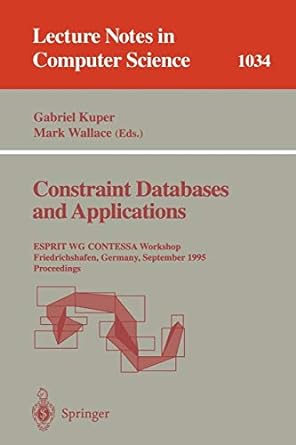Question
CSE 2240 PROGRAM 4 - Sieve of Eratosthenes DUE: 4/2/17 You are to write an ARM assembly program(Keil Univision) that uses the Sieve of Eratosthenes
CSE 2240 PROGRAM 4 - Sieve of Eratosthenes
DUE: 4/2/17
You are to write an ARM assembly program(Keil Univision) that uses the Sieve of Eratosthenes (er-uh-tos-thuh-neez) algorithm to calculate all prime numbers less than or equal to N, where N is a named constant. A good description of the algorithm can be found at http://www.geeksforgeeks.org/sieve-of-eratosthenes/. The program below is a C++ version of the solution. The first N+1 bytes of memory beginning at address 0x40000000 will correspond to the bool prime[N+1] array. Each entry in this array will be of type DCB. The first available full-word boundary address after the end of the prime array will corresponds to the start of the vector
// C++ program to calculate all primes less than or equal to
// N using Sieve of Eratosthenes. The primes are stored in a vector
#include
#include
using namespace std;
int main() {
// Create a boolean array "prime[0..N]" and initialize
// all entries it as true. A value in prime[i] will
// finally be false if i is Not a prime, else true.
const unsigned int N = 100;
bool prime[N+1];
for(unsigned int i=0; i prime[i] = true; for (unsigned int p=2; p*p<=N; p++) { // If prime[p] is not changed, then it is a prime if (prime[p] == true) { // Update all multiples of p for (unsigned int i=p*2; i<=N; i += p) prime[i] = false; } } vector // Save all primes in a vector for (unsigned int p=2; p<=N; p++) { if (prime[p] == true) primes.push_back(p); } // Display the contents of the vector for (unsigned int prime : primes) cout << prime << endl; return 0; }
Step by Step Solution
There are 3 Steps involved in it
Step: 1

Get Instant Access to Expert-Tailored Solutions
See step-by-step solutions with expert insights and AI powered tools for academic success
Step: 2

Step: 3

Ace Your Homework with AI
Get the answers you need in no time with our AI-driven, step-by-step assistance
Get Started


